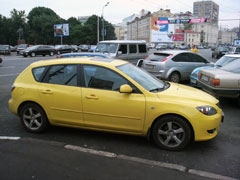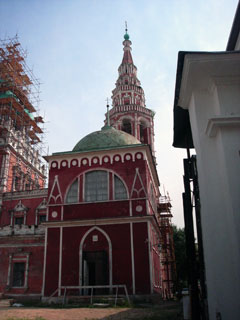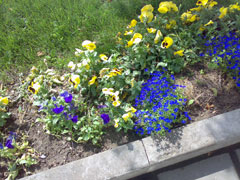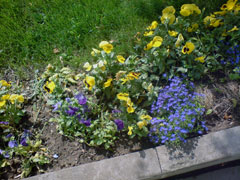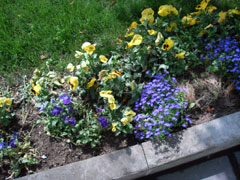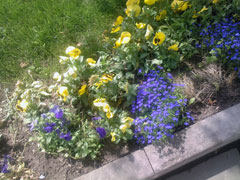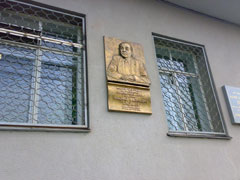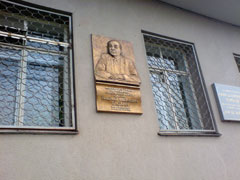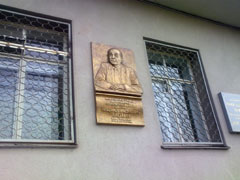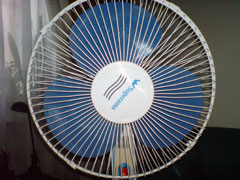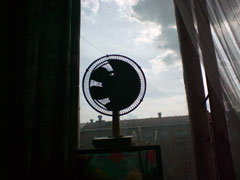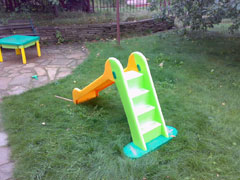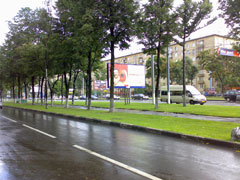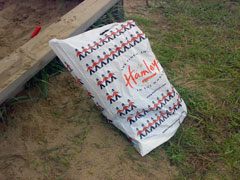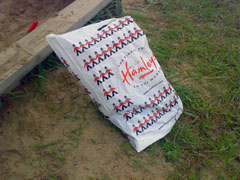|
|
Review of Nokia N73’s 3.2 Mpix camera
Review of GSM/UMTS-smartphone Nokia N73>>>
Left behind by Sony Ericsson at the initial stage of development of camera-centric handsets, Nokia has started cutting down the gap rapidly – in 2005 the company’s solutions could not boast any breakthroughs in this field, which enabled its competitors to fill up the empty space in this niche. But in the year of 2006 there has been a major leap up performed by the Finnish manufacturer, so that today Nokia’s handsets are equal or even superior to other phones. The flagship in imaging is Nokia N73, rather than simultaneously announced Nokia N93 – the reason, why a model with junior in rank claims this title, you will find out after reading up this article. And today we’re building up the review in an uncommon fashion – first we are coving camera and only then moving on to other handset’s features.

It’s widely known that Sony Ericsson due to a minor market share at its establishment was forced to pioneer in many fields and get the market moving forward. Back then a bundled camera module was considered as a worthless makeweight, which wouldn’t make any sense in future either. A number of extremely conservative users proclaimed themselves modern wreckers and started pushing towards renunciation of cameras in mobile phones. The best reason they could adduce was superior quality of already existing digital cameras and thus unnecessary overpayment for something with weaker implementation quality. Having possessed a successful experience of working on the Japanese market, where hybrid devices were in high demand, over at Sony Ericsson they stimulated development of all other markets off; basically nowadays we see the consequences of this ever-lasting impulse. I don’t want to make fans of certain manufacturers mad at me, but it was Sony Ericsson which introduced dual-face handsets (taking shots in horizontal position, external dedicated buttons, copying of digital cameras’ design) in the first place. In other words the company offered all users not to master something new, but make use of their old experience. Initially it made many smile, since the quality of those cameras left much to be desired, however today this approach is found on most manufacturers’ solutions.
Nokia isn’t an exception as it has adopted all the best of Sony Ericsson’s experience. For those standing firm on their point of view: learning from competitors’ experience and borrowing commercially successful concepts is normal and ignoring these, on the contrary, indicates that something is wrong with that company. By “borrowing” I mean not blind copying of completely similar prototypes running on own hardware base – it not the way Nokia works, unlike the other company, which is currently losing its shares with orbital velocity.
So what conclusions were drawn by Nokia after learning by own and others’ mistakes?
- Dual-face phones (camera-handset) are in demand nowadays (it would be better to say the layout of controls allowing to hold the phone horizontally, but it’s not very important);
- Users prefer having the lens covered, so that it won’t be exposed to wear and tear;
- Photos should look good on both handset’s and PC’s screens;
- There should be Auto mode for instant shooting, but advanced users require variety of settings as well;
- The device itself should not be huge.
S60 platform has been chosen as a foundation for all camera-centric solutions, as it enables developing complicated and feature-packed products in short spaces of time, embedding various camera modules retaining similar settings and common interface. But to say that Nokia has soullessly approached implementation of users’ requests would mean to tell a lie – some aspects of Nokia N73 were created in a very inventive way.
First of all, for the first time we experience such deep integration of two different gadgets – it’s a handsets doubling as a camera. Amongst S60-powered smartphones you won’t find even a single one matching the N73 in terms of camera handling. The previous flagship in imaging, Nokia N90 packed all its features in a different form-factor and thus lacked many external controls. Therefore its practical value for end-users was miserable, as they couldn’t apply previously obtained experience. However, the N73 is another story altogether. The left side houses a dedicated volume key allowing you to zoom in/out while shooting and adjust volume in other cases. A slightly sticking out shutter key, as well as gallery shortcut button, is mounted in the right plate. This layout leaves much to be desired, though, as when preparing to take a shot, finger instinctively presses the gallery key rather than the shutter button; for example in Sony Ericsson’s handsets this aspect is taken into consideration – the camera trigger key is located right on the place where the Nokia N73’s dedicated gallery key is mounted on. Considering that the buttons layout, their arrangement and principle of operation were adopted from Sony Ericsson, it would have been better to put implement already existing solutions rather than developing own superstructures. Try to hold the handset single-handedly and look at your finger and think about they way to make it more comfortable – “swapping the places” is almost evident.
Buttons have glowing blue edging, which feels good and allows for managing the phone even in the dark.
The camera module itself is mounted on the rear plate; it’s covered by an active moving shutter (releasing it starts up camera application), preventing dust from getting inside. In light of the fact the N73 adopts the S60, it has inherited “heaviness” of this platform and can’t pretend to be called speedy. To put it clearly, it takes around 4 seconds to call up camera app after uncovering the lens, and nearly the same time to focus and snap a photo. So at best you will acquire an image in 7-8 seconds, while other phones can handle it in 4-5 seconds.

The camera’s spec sheet is very exciting to read: 3.2 Mpix matrix (CMOS) with a mechanical shutter (speed from 1/1000s to 2s), focal distance - 5.6 mm, lens – Tessar by Carl Zeiss. Auto-focus is also onboard, at that announced focus range is 10 cm ~ infinity. While optical zoom is disable, the camera incorporates 20x-digital one.
On the face of it, the lens and used technologies match those of Nokia N93, but actually the N73 is more fetching owing to cutting-edge solutions and tuned image processing system being embedded into it.
Nokia has been consistently applying a remarkable image processing system to its solutions over the past few years. It analyzes a photo and distinguishes main color zones, then for areas with the most vivid colors get higher brightness and gamma – in some ways it’s like Saturation filter in a graphics editor. To give you the flavor of that, we’ve taken a photo of a canary Mazda – Nokia N73 delivers somewhat unnatural color, as the car significantly differs from the background, I could even say it shines with neon light. Therefore the car looks like it originates from a paint book.
On the photo featuring a church, pay attention to the sand – on Nokia N73’s shot is has surrealistic yellowish tint with shadows, whereas Nokia N93 produces mostly the same effect but less evident.
Vivid and colorful city flowers turned out to look just as we had expected them to – you can see dotty coloring of flowers, making them very sharp and due to that they stand out against the background. For this shot Nokia N93 couldn’t deliver auto-focus, even though on the screen it looked fine. If you’re not keen on shooting flowers, there is another example of that effect – contact lenses used by women, in fact the colors appear unnatural, they are almost impossible to overlook, just like in the case described above.
Another example is the shot featuring a memorial tablet – N73 insists that it has goldish tint, while all other colors on the photo are grey and hardly stand out. As I’ve mentioned this about, the brightest color on the picture gets amplified by Nokia’s device and on the other hand Sony Ericsson K800i, Samsung D900 provide a most realistic appearance of the tablet. What will appeal to a end-user more? In my opinion, brightness and vividness of a picture, even at the cost of naturalness sometimes – at any rate, such slips as that with the car or rare, and in other cases images look realistic or at least pretend to be.
What Nokia lacks is ease of use when it comes to rendering photos in the Picture editor (Saturation filter for instance) – the colors alter too rapidly; whereas pictures taken by other cameras get, if I may say so, better treatment – below are the samples of the K800i’s photos with overlaid Saturation filter. The entire operation took us 20 seconds, since the main goal was to check out how people will feel about brighter picture (the Yellow channel was amplified in order to emphasize flowers of this color)
It’s remarkable that with Nokia N73 the manufacturer has made chroma settings available for public for the first time. If you peek at the Color tones menu, the last item on the list will be Vivid, which is just a Saturation filter, similar to the processing algorithm mentioned above, but with higher values. In other words, if you take a photo of grass, it gets bright green and looks like a carpet. It made laugh a bit – this mode’s icon features a variety of colors, while amount of tint and color tones reduces dramatically. This feature reminds of some settings in European and Japanese TVs – on the latter ones grass and nature in general have extremely bright colors and therefore look surrealistic. There will be always people on both ends, who will either love it or hate it. So everyone will find this function to his (her) own liking.
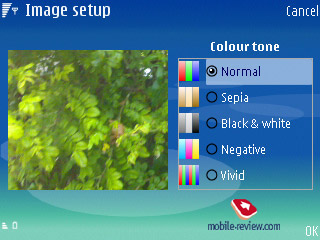

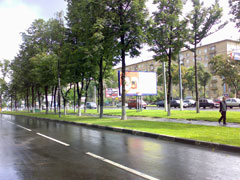 |
 |
N73 (+)
maximize, 2048x1536, JPEG |
N73 (+)
maximize, 2048x1536, JPEG |
 |
 |
N73 (+)
maximize, 2048x1536, JPEG |
N73 (+)
maximize, 2048x1536, JPEG |
 |
 |
N73 (+)
maximize, 2048x1536, JPEG |
N73 (+)
maximize, 2048x1536, JPEG |
 |
 |
N73 (+)
maximize, 2048x1536, JPEG |
N73 (+)
maximize, 2048x1536, JPEG |
Taking account of manufacturers applying algorithms of shots rendering nowadays, and the fact that end-users have nothing to do with this process, acquiring top-notch photos with mobile phones is only a dream today. For example Sony Ericsson K800i shows off noise reduction system, making all pictures smooth but at the cost of small details and blurry images at maximum zoom grade (the K750i didn’t have such algorithm). All manufacturers don’t let us have the final picture “as is”, in the way the sensor captures it, post-rendering includes various filters which could be overlaid using PC and the image would not loose in quality or even might get better. An alternative in the form of RAW format, similarly to digital cameras, is missing (in cheap DCs even JPEG doesn’t undergo such intensive rendering) and it’s a major drawback off all modern camera-centric handsets.
In future possibility of acquiring realistic shots which could be rendered by the phone itself (for example, default settings) should you we want that would be an optimal solution. Various setting will also make sense (similarly to what we have with Scenes). It has proven to be a right approach, when user is able to choose. However for the time being manufacturers pre-define ways of shooting and rendering, leaving out end-users, while makers of digital cameras have already gotten rid of this baneful habit.
As an intermediate summary, we can rightfully state that photos taken by Nokia N73 might lack tiny details due to colors adjustment, but on the whole the experience dosen’t suffer too much because of that; so the rivalry with Sony Ericsson K800i ends in a draw. The same holds true for the Nokia N93’s case, but here Nokia N73 is ahead not only owing to image processing system, but better focusing and adjacent features as well. Below you will find comparison of photos taken with Nokia N73, Nokia N93, Sony Ericsson K800i, Samsung D900. In most cases either Nokia’s or Sony Ericsson’s solutions are prevailing.
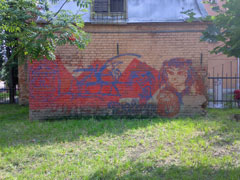 |
 |
N73 (+)
maximize, 2048x1536, JPEG |
K800 (+)
maximize, 2048x1536, JPEG |
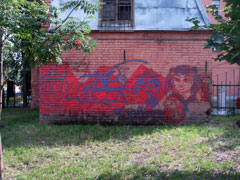 |
 |
N93 (+)
maximize, 2048x1536, JPEG |
D900 (+)
maximize, 2048x1536, JPEG |
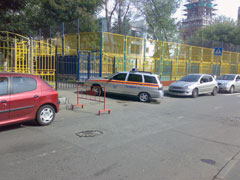 |
 |
N73 (+)
maximize, 2048x1536, JPEG |
K800 (+)
maximize, 2048x1536, JPEG |
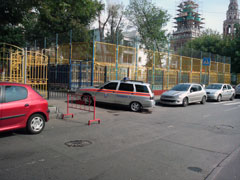 |
 |
N93 (+)
maximize, 2048x1536, JPEG |
D900 (+)
maximize, 2048x1536, JPEG |
 |
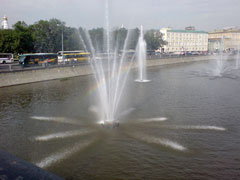 |
N73 (+)
maximize, 2048x1536, JPEG |
K800 (+)
maximize, 2048x1536, JPEG |
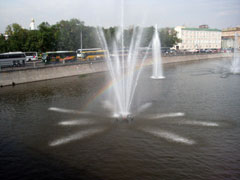 |
 |
N93 (+)
maximize, 2048x1536, JPEG |
D900 (+)
maximize, 2048x1536, JPEG |
 |
 |
N73 (+)
maximize, 2048x1536, JPEG |
K800 (+)
maximize, 2048x1536, JPEG |
 |
 |
N93 (+)
maximize, 2048x1536, JPEG |
D900 (+)
maximize, 2048x1536, JPEG |
 |
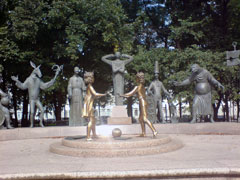 |
N73 (+)
maximize, 2048x1536, JPEG |
K800 (+)
maximize, 2048x1536, JPEG |
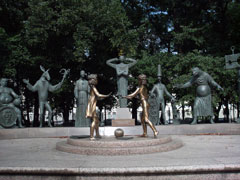 |
 |
N93 (+)
maximize, 2048x1536, JPEG |
D900 (+)
maximize, 2048x1536, JPEG |
 |
 |
N73 (+)
maximize, 2048x1536, JPEG |
K800 (+)
maximize, 2048x1536, JPEG |
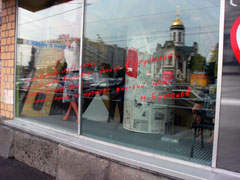 |
 |
N93 (+)
maximize, 2048x1536, JPEG |
D900 (+)
maximize, 2048x1536, JPEG |
 |
 |
N73 (+)
maximize, 2048x1536, JPEG |
K800 (+)
maximize, 2048x1536, JPEG |
 |
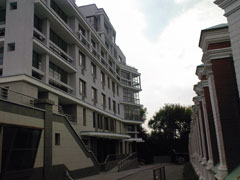 |
N93 (+)
maximize, 2048x1536, JPEG |
D900 (+)
maximize, 2048x1536, JPEG |
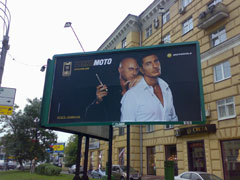 |
 |
N73 (+)
maximize, 2048x1536, JPEG |
K800 (+)
maximize, 2048x1536, JPEG |
 |
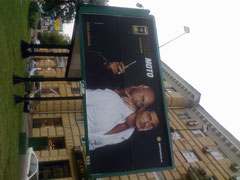 |
N93 (+)
maximize, 2048x1536, JPEG |
D900 (+)
maximize, 2048x1536, JPEG |
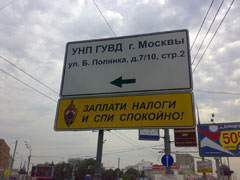 |
 |
N73 (+)
maximize, 2048x1536, JPEG |
K800 (+)
maximize, 2048x1536, JPEG |
 |
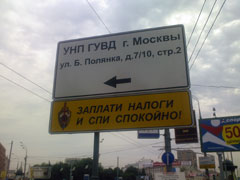 |
N93 (+)
maximize, 2048x1536, JPEG |
D900 (+)
maximize, 2048x1536, JPEG |
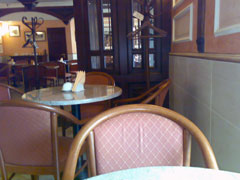 |
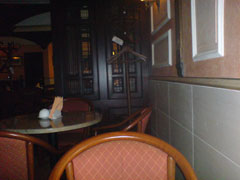 |
N73 (+)
maximize, 2048x1536, JPEG |
K800 (+)
maximize, 2048x1536, JPEG |
 |
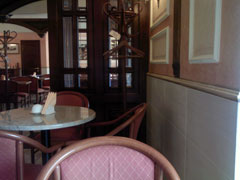 |
N93 (+)
maximize, 2048x1536, JPEG |
D900 (+)
maximize, 2048x1536, JPEG |
In order to find out how ordinary end-users, who might actually buy these products, feel about photos taken by the K800, the D900, N73 and the N93, we carried out a small survey – printed 10 shots by each device (you saw them above) and offered people to grade the snaps (comparison of 4 images of the same kind). The acquired result are cite below in the table (all photos were printed out on HP 8153 filled with the best photographic paper and maximum quality). Twenty two people participated in the survey, so the percentages were calculated according to shares of opinions. For simplicity sake we approximated the numbers.
Models |
Best quality (first place) |
Good quality (second place) |
Average quality (third place) |
Samsung D900 |
0% |
10% |
40% |
Sony Ericsson K800i |
20% |
30% |
30% |
Nokia N73 |
50% |
30% |
10% |
Nokia N93 |
30% |
30% |
20% |
Result is demonstrative and shows that consumers prefer vivid picture over its dim analogue, but with realistic color rendering. Meanwhile such strange position of Samsung in comparison is caused not by real picture quality (it is comparable among all cameras), as not always thoroughly worked out details of background, larger zoom of picture in some cases (comments were this like, meaning that less details fit into the shot). I think that the result we got is very eloquent and contradicts generally accepted idea which arose in professional journalist nature (most of them, at least) about superiority of Sony Ericssson’s K800 camera. Consumer votes for a more vivid picture.
Such comparison was done for shots viewed on PC, the result was quite similar. In order to simplify the task, we made paired comparisons, when user was asked to rate 2 shots, instead of whole four of them. In Nokia N73 and Nokia N93 battle, N73 came out victorious in 85% of cases. A great result which is not so evident for many. When comparison was made between Sony Ericsson K800i and Nokia N73, Sony Ericsson was picked only in 40% of cases. This percentage is clearly larger than the one we got when printed shots were compared. But again Sony Ericsson was unable to gain clear advantage in this battle either.
Nokia’s product is using diode flash, which is clearly weaker than xenon flash in terms of power, at least this is the conclusion most draw, which leads to Sony Ericsson’s K800i superiority in night time. But here we have to point out that K800i’s xenon flash is weak, and it is simply impossible to install a decent flash as ones used in cheap digital cameras due to battery power. As a result – effective distance of flash is up to 2 meters, this is not enough for landscape photos, but is pretty much enough for making portrait shots or photographing objects nearby. In such aspect Sony Ericsson’s flash takes away victory from all of its competitors.
However usage of electronic shutter does not allow making shots with big exposure, and have no blur on them, as from huge handshake. Usage of mechanic shutter in Nokia N73 allows making better shots at night (in most cases they turn out crisper). As intermediate solution Twilight Landscape feature can be used in Sony Ericsson, but still shots don’t come out that crisp. I’d like to point out that now we’re not including usage of flash into consideration. Diode that plays the role of flash in N73 is low-powered, and its usage by company itself is described effective on a 1m distance. At same time this is not impulsive, it’s a constant light source. When making shots at distance up to 3m it is still pretty effective and gives better results that xenon flash (best result in terms of perception of picture). Due to long period of flash being activated it can be compared with xenon one in terms of strength and effect. This is ambiguous conclusion, but we checked that in different conditions.
 |
 |
N73 (+)
maximize, 2048x1536, JPEG |
K800 (+)
maximize, 2048x1536, JPEG |
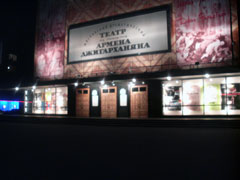 |
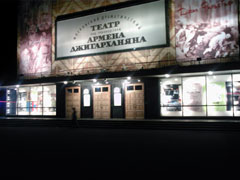 |
N93 (+)
maximize, 2048x1536, JPEG |
D900 (+)
maximize, 2048x1536, JPEG |
 |
 |
N73 (+)
maximize, 2048x1536, JPEG |
K800 (+)
maximize, 2048x1536, JPEG |
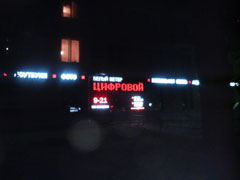 |
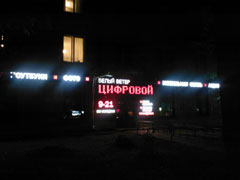 |
N93 (+)
maximize, 2048x1536, JPEG |
D900 (+)
maximize, 2048x1536, JPEG |
When taking shots in locations where lighting conditions were bad, xenon flash was an obvious winner when moving objects were photographed. We tried taking pictures of fan on a 1m distance, on K800i’s picture you can see vanes, due to impulse they got enough lighting, vanes were blurry when shots were taken with N73.
Shooting of moving objects with lighting conditions being good and speed of those objects was reduced gave Nokia N73 advantage, this is caused by mechanic shutter. Information acquired from matrix is transferred from all points at once, instead of in series mode. We were able to check this statement with help of fan. You can put it on the window with pretty bright lighting and try taking photo of vans without flash. In case with electric shutter we will see that vans are blurry, and this is caused by in series mode of acquiring data from camera’s matrix. There is no such effect in case of Nokia N73.
I’d like to make a note that casual user will find it hard to find a lot of situations when mechanic’s shutter advantage will be obvious. Moving cars will look approximately same way on both handsets. Most likely difference will be seen on shots of bicycles on a sunny day (you will either see spokes or no).
Macro mode is presented quite good on Nokia N73, however there are some concerns. First of all it should be activated by user, as in automatic mode camera is not focusing on 6-30cm distance. Manufacturer states that focusing works from 10cm, but it can focus on 6cm distance too. Problem can be seen when there is monochromatic object in the area, such as vivid flower, macro will not work very well in that mode (slightly worse than in case with Sony Ericsson K800i).
 |
 |
N73 (+)
maximize, 2048x1536, JPEG |
K800 (+)
maximize, 2048x1536, JPEG |
 |
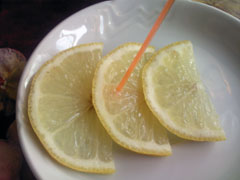 |
N93 (+)
maximize, 2048x1536, JPEG |
D900 (+)
maximize, 2048x1536, JPEG |
 |
 |
N73 (+)
maximize, 2048x1536, JPEG |
K800 (+)
maximize, 2048x1536, JPEG |
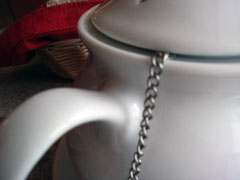 |
 |
N93 (+)
maximize, 2048x1536, JPEG |
D900 (+)
maximize, 2048x1536, JPEG |
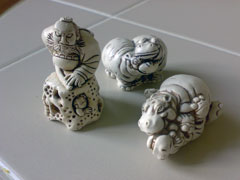 |
 |
N73 (+)
maximize, 2048x1536, JPEG |
K800 (+)
maximize, 2048x1536, JPEG |
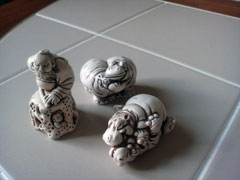 |
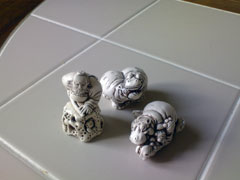 |
N93 (+)
maximize, 2048x1536, JPEG |
D900 (+)
maximize, 2048x1536, JPEG |
There are not many improvements in terms of interface, for example when you’re activating camera you see icons for main events (type of memory, photo resolution, options), there is vertical row on the right. You can switch between icons with help of joystick.
Video sample, working with handset’s camera (wmv, 10.8 Mb)>>>

First thing that pops in your eyes is focusing area, frame displayed on screen. In Nokia N93, just like in Sony Ericsson K800i, focusing is done on central point, here frame is much bigger and it occupies bigger part of shot. After making several tests we found out that focusing occurs on 4 points inside this area. Problems occur in case there is monochromic object on a distance less than 10 centimeters, in that case camera will focus on the background instead. In that case we advice you to swith into macro mode, it will save the day. It can be clearly stated that for landscape photos, or casual family ones such focusing area is whole lot better, it allows achieving better results. Another setting made for user’s demands, a setting for majority of shots that will be done with this camera.








Camera settings are as follows, there are four resolutions:
- Print 3M – Large
- Print 2M – Large
- Print/e-mail 0.8M – Small
- Multimedia message 0.3M
Manufacturer is not mentioning real photo resolution, but we’ll be there to do it instead. Resolutions are as follows: 2048x1536, 1600x1200, 1024x768, 640x480 correspondingly. Average photo size is 1mb, 600-700kb, 200-300kb and 75-100kb. You cannot select picture quality.
Handset is using digital zoom, its maximal setting is x20. There are two types of zooming – “standard” and “extended”. In second case you achieve maximal results, but artifacts become evident a lot. When using standard digital zoom artifacts will not be that noticeable. Considering the fact that such “zooming” can be done in any graphic editor – it is not recommended to use it when taking shots.
 |
 |
N73 (+)
maximize, 2048x1536, JPEG |
N73 (+)
maximize, 2048x1536, JPEG |
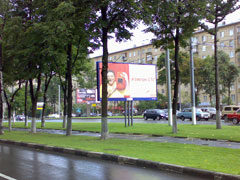 |
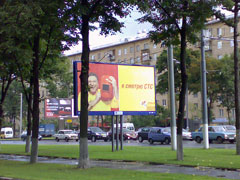 |
N73 (+)
maximize, 2048x1536, JPEG |
N73 (+)
maximize, 2048x1536, JPEG |
 |
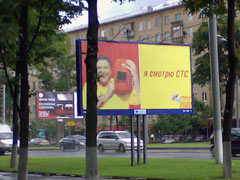 |
N73 (+)
maximize, 2048x1536, JPEG |
N73 (+)
maximize, 2048x1536, JPEG |
Shooting modes include one mode that can be customized according to user’s preferences, automatic and macro too. You can also use portrait mode, landscape, sport, night and night portrait.
Flash can be activated automatically, turned off, or used for removing red eyes. Timer can be set for 2, 10 and 20 seconds. Handset supports multi-shot feature (three at a time), this can come in handy when you’re taking shot of moving object. This feature was designed to be similar to Best Pic feature from Sony Ericsson, and thus offers smaller flexibility.
Exposure compensation – this feature is interesting for some specific conditions, and can result in making more quality shots. Grade is from -2 to +2 with 0.5 taken as a step.
White Balance – AWB, sun, cloudy, Incandescent, Fluorescent. You can use Sepia, Black&White, Negative, Vivid (last was described in details above).
 |
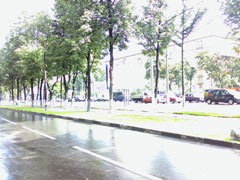 |
N73 (+)
maximize, 2048x1536, JPEG |
N73 (+)
maximize, 2048x1536, JPEG |
 |
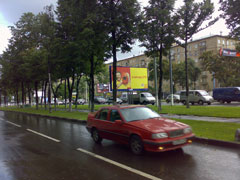 |
N73 (+)
maximize, 2048x1536, JPEG |
N73 (+)
maximize, 2048x1536, JPEG |
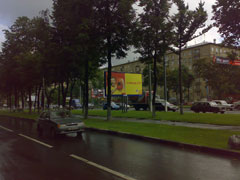 |
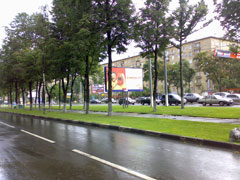 |
N73 (+)
maximize, 2048x1536, JPEG |
N73 (+)
maximize, 2048x1536, JPEG |
 |
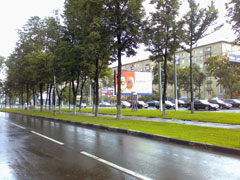 |
N73 (+)
maximize, 2048x1536, JPEG |
N73 (+)
maximize, 2048x1536, JPEG |
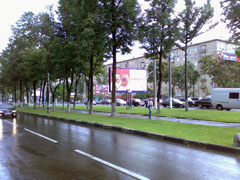 |
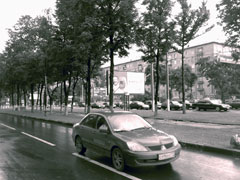 |
N73 (+)
maximize, 2048x1536, JPEG |
N73 (+)
maximize, 2048x1536, JPEG |
 |
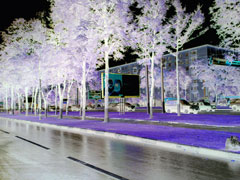 |
N73 (+)
maximize, 2048x1536, JPEG |
N73 (+)
maximize, 2048x1536, JPEG |
ISO settings are usually set up automatically, but here alike several cameras manufacturer decided to give you ability to setup range, instead of specific setting. This means that in case you select low ISO setting – it can be from 60 to 200, middle setting will give you up to 200, and high ISO will come next. This is another step towards mass market, an attempt to free user from going into details.
Taking photos of documents is not Nokia N73’s strong feature, even though there is macro mode, which allows getting better shots due to different focusing mode. However Sony Ericsson’s product looks clearly better in comparison, shots quality is good enough for using them in applications like text recognition applications. In case with Nokia N73 we get slightly more blurred photos.
Here is a list of photo samples, so you can judge the quality of shots done with Nokia N73 yourself.
 |
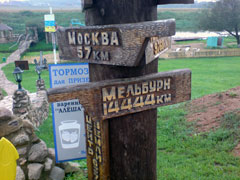 |
N73 (+)
maximize, 2048x1536, JPEG |
K800 (+)
maximize, 2048x1536, JPEG |
 |
 |
N73 (+)
maximize, 2048x1536, JPEG |
K800 (+)
maximize, 2048x1536, JPEG |
 |
 |
N73 (+)
maximize, 2048x1536, JPEG |
K800 (+)
maximize, 2048x1536, JPEG |
 |
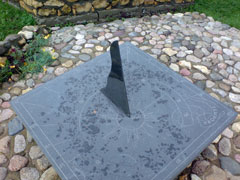 |
N73 (+)
maximize, 2048x1536, JPEG |
K800 (+)
maximize, 2048x1536, JPEG |
 |
 |
N73 (+)
maximize, 2048x1536, JPEG |
K800 (+)
maximize, 2048x1536, JPEG |
 |
 |
N73 (+)
maximize, 2048x1536, JPEG |
K800 (+)
maximize, 2048x1536, JPEG |
 |
 |
N73 (+)
maximize, 2048x1536, JPEG |
K800 (+)
maximize, 2048x1536, JPEG |
 |
 |
N73 (+)
maximize, 2048x1536, JPEG |
K800 (+)
maximize, 2048x1536, JPEG |
 |
 |
N73 (+)
maximize, 2048x1536, JPEG |
K800 (+)
maximize, 2048x1536, JPEG |
 |
 |
N73 (+)
maximize, 2048x1536, JPEG |
K800 (+)
maximize, 2048x1536, JPEG |
 |
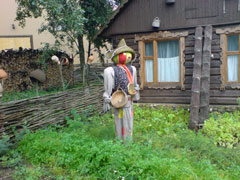 |
N73 (+)
maximize, 2048x1536, JPEG |
K800 (+)
maximize, 2048x1536, JPEG |
Video recording. When recording video there are considerably less settings, than in photo taking mode. There is software image stabilizer, it was first introduced in Nokia N80. White balance – automatic, sun, cloudy, Incandescent, Fluorescent. You can use Sepia, Black&White, Negative, Vivid as SFX. There are only two shooting modes – auto or night mode. Maximal resolution – 352õ288 pixels, format - mpeg4, you can mute sound (there is no chance of changing frame rate, it will constantly be 15 fps). Overall recording time is limited only by amount of free memory. Digital zoom in maximal resolution is x4, in case with QCIF – it will be x8 (here 3GP format will be used). Unlike Nokia N93, where video is one of key points and advantages of handset, manufacturer decided to drop this aspect from priority list in case with N73. As a result handset is better in this term than Sony Ericsson K800i, where video recording quality remained the same as in first handsets. However Samsung models have better video quality.
Video sample 1 (mp4, 4.7mb)>>>
Video sample 2 (mp4, 4.4mb)>>>
Video sample 3 (mp4, 13.4mb)>>>
Conclusions on Nokia N73 camera
Nokia N73 is line-up flagship for Nokia which provides best shots quality among all handsets. Nokia N93 advantage which has considerable specifications is gained by different work process (dual mode, special buttons on sides, protective shutter).
When compared with Sony Ericsson K800i, which is a acknowledged favorite among users and journalists, it can be said that products are equivalent. K800i has more natural color rendering, more convenient interface (this is v2), bigger set of functions (such as BestPic, other modes, shortcuts during shooting). Details look better on Sony Ericsson K800i in most cases. But in terms of picture vividness, its perception on display and PC, as well as printed photos, Nokia N73 is better. This is acquired by algorithms of picture processing and not optics in any case. Considering fact that most users take picture of themselves and do not make any further modifications, we can say that Nokia’s product gives better photos. You can get same quality shots, or even slightly better ones in case with Sony Ericsson K800i and some additional work in graphic editor. But there is no much sense in this approach. This is why we’re saying that Nokia N73 allows you to get better photos, and this is proven by users as we had done polls.
Xenon flash is better only on short distance, and does not improve situation on long ones, it also focuses on foreground and misses background, and here is where Nokia’s diode comes in handy. As you can see each product has its strengths and weaknesses. Sony Ericsson K800i has functionally more saturated possibilities that will allow you making great shots in manual mode, but this advantage is not so big (one of modes – which is taking photos of documents). Interface solution from Sony Ericsson belongs to second generation (meanwhile this is very first type of Cyber Shot), at same this time this is still 1g from Nokia. Camera working speed is a great advantage for Sony Ericsson K800i, and strongest shortcoming of Nokia’s product. Reportage filming is nearly impossible with this handset.
We’d like to repeat ourselves and say that comparing picture quality between Nokia N73 and Sony Ericsson K800i – is clearly matter of taste (color gamma), and it is hard to differentiate handsets. In the end these products are equivalent, if you don’t take interface and operating speed into consideration.
Review of GSM/UMTS-smartphone Nokia N73>>>
Eldar Murtazin (eldar@mobile-review.com)
Translated by Oleg Kononosov (oleg.kononosov@mobile-review.com), Alexandr "Lexx" Zavoloka (alexander.zavoloka@mobile-review.com)
Published — 29 August 2006
Have something to add?! Write us... eldar@mobile-review.com
|
News:
[ 31-07 16:21 ]Sir Jony Ive: Apple Isn't In It For The Money
[ 31-07 13:34 ]Video: Nokia Designer Interviews
[ 31-07 13:10 ]RIM To Layoff 3,000 More Employees
[ 30-07 20:59 ]Video: iPhone 5 Housing Shown Off
[ 30-07 19:12 ]Android Fortunes Decline In U.S.
[ 25-07 16:18 ]Why Apple Is Suing Samsung?
[ 25-07 15:53 ]A Few Choice Quotes About Apple ... By Samsung
[ 23-07 20:25 ]Russian iOS Hacker Calls It A Day
[ 23-07 17:40 ]Video: It's Still Not Out, But Galaxy Note 10.1 Gets An Ad
[ 19-07 19:10 ]Another Loss For Nokia: $1 Billion Down In Q2
[ 19-07 17:22 ]British Judge Orders Apple To Run Ads Saying Samsung Did Not Copy Them
[ 19-07 16:57 ]iPhone 5 To Feature Nano-SIM Cards
[ 18-07 14:20 ]What The iPad Could Have Looked Like ...
[ 18-07 13:25 ]App Store Hack Is Still Going Strong Despite Apple's Best Efforts
[ 13-07 12:34 ]Infographic: The (Hypothetical) Sale Of RIM
[ 13-07 11:10 ]Video: iPhone Hacker Makes In-App Purchases Free
[ 12-07 19:50 ]iPhone 5 Images Leak Again
[ 12-07 17:51 ]Android Takes 50%+ Of U.S. And Europe
[ 11-07 16:02 ]Apple Involved In 60% Of Patent Suits
[ 11-07 13:14 ]Video: Kindle Fire Gets A Jelly Bean
Subscribe
|




